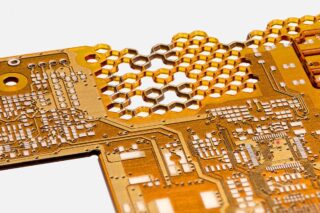Toyota is ushering in a new era of automotive design and engineering with its groundbreaking battery-electric vehicle (BEV) platform. This innovative platform represents a fusion of digital and physical technology and marks a significant shift towards more sustainable, efficient, and emotionally engaging vehicles.
A New BEV Platform: More from Less
At the heart of Toyota’s future is its new BEV platform, which promises to deliver more with less, Ian Cartabiano, VP of Advanced Design for Lexus and Toyota explained, during a press presentation that DirectIndustry attended last month at the Toyota House in Paris:
“This platform is designed to offer a completely new experience for drivers and passengers alike. It’s the most efficient engineering without losing one ounce of emotion. This is going to lead to breakthrough solutions and experiences for a diverse customer base.”
Toyota’s approach is to create vehicles that not only perform better but also resonate with users on a deeper level.
“We believe that the EV market is going to change. Maybe in the future, people aren’t gonna worry about driving range and charging times. So if they don’t have to worry about that, they will shift their kind of thoughts to a desire for an EV that fits their lifestyle.”
Software-Defined Vehicles: The Future of UX, UI, and AI
One of the aspects Ian was most excited about regarding this BEV platform is the integration of software-defined vehicles. This concept reimagines the future of user experience (UX), user interface (UI), and artificial intelligence (AI). Unlike traditional vehicles where UX and UI are layered on existing systems, Toyota’s new architecture builds these elements from the ground up. This allows for a more intuitive, responsive, and personalized driving experience.
“For example, in the LF-Z Concept Car, our design team has rethought the screen layout with a fundamentally new approach. Content will be displayed depending on the situation, creating a simpler and more intuitive user interface, one that anticipates your needs. This platform also enables programmable hardware, opening up endless possibilities for customization and innovation.”
Another example is the possibility for the user to experience the kind of drive he wants aboard his vehicle. For Ian, a vehicle in the future should be seen as a
“a moving sensor that can see, touch, hear, even smell or maybe even curate the perfect evening for you just by knowing what you want in your emotional state and where you are in your day.”

Innovation in Manufacturing: Monozukuri and Modular Design
Toyota’s commitment to innovation extends beyond the vehicles themselves to the way they are built. The concept of “Monozukuri”, a Japanese term meaning “manufacturing,” is central to Toyota’s approach. Their new BEV platform is designed around a modular structure, which allows different components—front, center, and rear—to evolve independently.
With a flat floor, redesigned suspension, and giga-casting technology, the platform allows for new proportions and forms that were impossible just a few years ago.
“We are minimizing components to such a degree that we can change the traditional proportions of the vehicles in ways that weren’t even possible 4 to 5 years ago.”
This flexibility enables Toyota to push the boundaries of design. They can create vehicles with larger wheels, sleeker cabins, and more dynamic profiles. This new architecture also allows them to push their lighting signatures and stamping technology to create forms like never before.
Whether it’s a compact Sedan, a versatile SUV, or a high-performance sports car, this platform gives Toyota the ability to create a wide range of vehicles that cater to different needs and preferences.
“Imagine a Sedan that’s the size of our Lexus IS with an interior size of an ES or even LS. Or an S U V with the exterior size of Lexus NX but the interior size of RX or LX.”
But for Ian, the platform’s inherent aerodynamic advantages also ensure that these vehicles are visually stunning and highly efficient.
“Our intention is not to create science experiments on the road that are weird but beautiful and stunning objects that will capture the heart of our customers.”
This flexibility is key to Toyota’s ability to react quickly to industry changes.
“Giga-casting structures and reduced-size electric motors will allow us to move quickly, especially when we are developing new high-density energy batteries and someday solid-state batteries. Internally, we talk about having a 50% reduction of the development process, plant investment cost, and production lead times on the design side.”
They can rethink and reimagine how their vehicles are assembled by redesigning their factories from the floor up. The goal, for Toyota, is to be able to bring new designs to market more quickly than ever before.
RELATED ARTICLE
Sustainability: Beautiful and Functional
Ian insisted on Toyota and its commitment to making sustainability not just a goal but a reality.
“Sustainability is not the future, It’s now.”
The new BEV platform integrates sustainable materials from the start. In the LF-Z Concept, for instance, the interior features extensive use of bamboo. This material is both sustainable and deeply connected to Toyota’s Japanese heritage.
“For example, the door panels are woven from a blend of bamboo yard and copper which can be used to conduct light around the cabinet. The ultra suede-like material in the seeds is 100% biomaterial-based. Instrument panels are also bamboo based and of course, the lush carpet is made from bamboo.”
Toyota’s next-generation architecture aims to redefine how we experience mobility.











